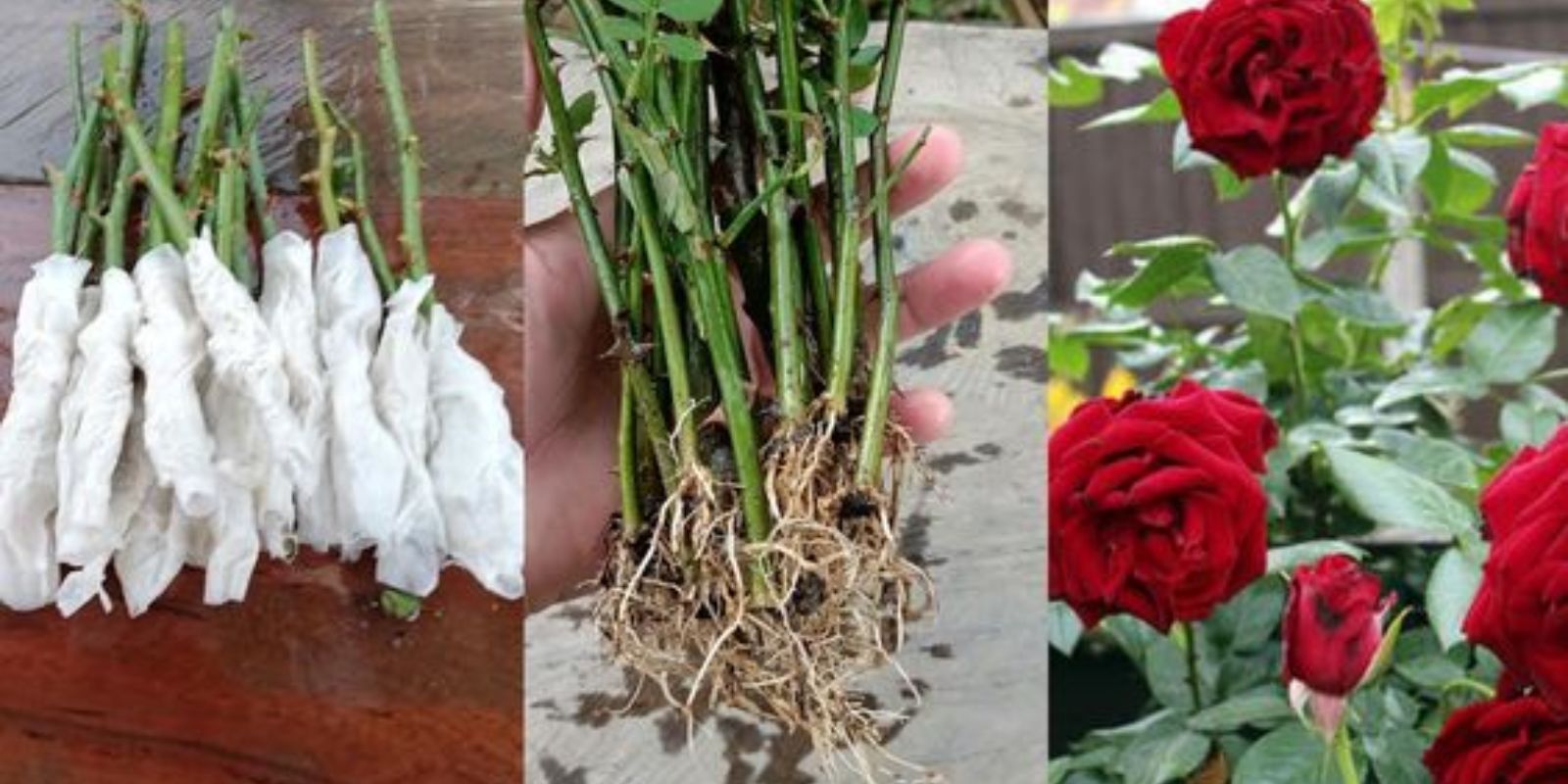Introduction:
Growing roses from cuttings is a cost-effective and gratifying way to expand your garden with beautiful blooms. Traditional propagation methods often require specific rooting mediums and conditions, but an innovative approach using toilet paper can simplify the process while still yielding great results. This method not only makes use of materials you likely already have at home but also ensures a higher success rate for rooting. This guide will take you through the steps of propagating roses using toilet paper, from selecting the right cuttings to transplanting the rooted cuttings into your garden.
Why Propagate Roses?
Roses are among the most beloved flowers worldwide, admired for their beauty, fragrance, and variety. Propagating roses allows gardeners to clone their favorite varieties, ensuring consistency in color, fragrance, and growth habits. It also provides a sense of accomplishment and deepens one’s connection to their garden. Additionally, propagating roses from cuttings is more economical than purchasing new plants.
Materials Needed:
- Healthy rose stems
- Sharp pruning shears
- Toilet paper
- Plastic bags or clear plastic containers
- Rooting hormone (optional)
- Water
- Pots or garden space for transplanting
Step-by-Step Guide:
- Selecting Healthy Cuttings: The first step in propagating roses is to select healthy cuttings. Choose strong, healthy stems from the current season’s growth. Ideally, the cuttings should be about 6-8 inches long and have at least 2-3 nodes (the small bumps on the stem where leaves and buds grow). Make sure the cutting is taken just below a node, as this is where roots are most likely to develop.
- Preparing the Cuttings: Using sharp pruning shears, make a clean cut just below a node on each stem. Remove the lower leaves from the cutting, leaving only the top set of leaves. This helps the cutting focus its energy on root development rather than maintaining foliage. If desired, dip the cut end into rooting hormone to promote faster and stronger root growth.
- Preparing the Toilet Paper: Lay out a sheet of toilet paper on a flat surface. Lightly moisten the toilet paper with water using a spray bottle or by gently running it under water. The paper should be damp but not soggy, as too much moisture can cause the cutting to rot.
- Wrapping the Cuttings: Place the prepared cuttings on the damp toilet paper. Roll the paper around the cuttings, ensuring that it is snug but not too tight. The goal is to keep the cutting moist and in close contact with the paper to encourage rooting.
- Creating a Humid Environment: To create a humid environment conducive to root development, place the wrapped cuttings into a plastic bag or clear plastic container. Seal the bag or container to retain moisture and humidity. This step is crucial as roses require a high humidity level to root successfully.
- Positioning and Care: Place the sealed bag or container in a warm, bright location with indirect sunlight. Avoid placing it in direct sunlight, as this can cause the cuttings to overheat and dry out. The ideal temperature range is between 65-75°F (18-24°C). Check the cuttings regularly to ensure the toilet paper remains moist. If it starts to dry out, lightly mist the paper with water.
- Monitoring Root Development: After about 3-4 weeks, gently unroll the toilet paper to check for root development. If roots have started to form, the cuttings are ready for transplanting. If not, rewrap the cuttings and give them more time. Patience is key in this process.
- Transplanting Rooted Cuttings: Once the cuttings have developed roots, they are ready to be transplanted into pots or directly into the garden. If transplanting into pots, use a well-draining potting mix designed for roses. Plant the cuttings so that the roots are well-covered, and water them thoroughly. If transplanting directly into the garden, choose a location with well-draining soil and plenty of sunlight. Dig a hole deep enough to accommodate the roots and water the newly planted cuttings well.
Tips for Success:
- Use Fresh, Healthy Stems: Always use fresh, healthy rose stems for cuttings. Avoid stems that are diseased or damaged.
- Maintain Moisture Levels: Keeping the toilet paper consistently moist is crucial. Too much water can lead to rot, while too little can dry out the cutting.
- Temperature Control: Ensure the cuttings are kept in a stable environment with temperatures conducive to rooting.
- Avoid Overhandling: Minimize handling of the cuttings to reduce stress and potential damage.
Benefits of Using Toilet Paper:
- Readily Available: Toilet paper is a common household item, making this method accessible to most people.
- Cost-Effective: Using toilet paper and plastic bags is an inexpensive alternative to traditional propagation mediums.
- Simple and Effective: This method simplifies the propagation process and can result in a higher success rate for beginners.
Conclusion:
Growing roses from cuttings using toilet paper is an innovative and effective method that can be easily implemented at home. By following these steps, you can propagate your favorite rose varieties and enjoy a garden full of beautiful blooms. This method not only saves money but also provides the satisfaction of growing roses from scratch. Give it a try, and don’t forget to share your progress with fellow gardening enthusiasts! 🌹🌱
Motivation:
Propagating roses using toilet paper is a fun and rewarding project for gardeners of all levels. Give this method a try and watch your garden flourish with beautiful roses! Share your experiences and inspire others to join in on the joy of rose propagation.

